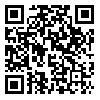Volume 13, Issue 5 (Dec & Jan 2020)
payavard 2020, 13(5): 345-358 |
Back to browse issues page
Download citation:
BibTeX | RIS | EndNote | Medlars | ProCite | Reference Manager | RefWorks
Send citation to:



BibTeX | RIS | EndNote | Medlars | ProCite | Reference Manager | RefWorks
Send citation to:
Rezaei M, Jafari N Z, Ghaffarian H, Khosravi Farmad3 M, Zabbah I, Dehghan P. Comparison of Data Mining Algorithms' Efficiency in Thyroid Disease Diagnosis. payavard 2020; 13 (5) :345-358
URL: http://payavard.tums.ac.ir/article-1-6905-en.html
URL: http://payavard.tums.ac.ir/article-1-6905-en.html
Mohsen Rezaei * 
 1, Nazanin Zahra Jafari1
1, Nazanin Zahra Jafari1 
 , Hossein Ghaffarian2
, Hossein Ghaffarian2 
 , Masoud Khosravi Farmad33
, Masoud Khosravi Farmad33 
 , Iman Zabbah4
, Iman Zabbah4 
 , Parvaneh Dehghan5
, Parvaneh Dehghan5 


 1, Nazanin Zahra Jafari1
1, Nazanin Zahra Jafari1 
 , Hossein Ghaffarian2
, Hossein Ghaffarian2 
 , Masoud Khosravi Farmad33
, Masoud Khosravi Farmad33 
 , Iman Zabbah4
, Iman Zabbah4 
 , Parvaneh Dehghan5
, Parvaneh Dehghan5 

1- Master of Sciences Student in Information Technology, Department of Computer, Higher Education Technical Institute Atrak Ghoochan, Ghoochan, Iran
2- Assistant Professor, Department of Computer Engineering, Faculty of Engineering, Arak University, Arak, Iran
3- Assistant Professor, Department of Computer, Higher Education Technical Institute Atrak Ghoochan, Ghoochan, Iran
4- Lecturer, Department of Computer, Torbat-e Heydariyeh Branch, Islamic Azad University, Torbat-e Heydariyeh, Iran
5- Assistant Professor, Department of Oncology Radiotherapy, Torbat-e Heydarieh University of Medical Sciences, Torbat-e Heydarieh, Iran
2- Assistant Professor, Department of Computer Engineering, Faculty of Engineering, Arak University, Arak, Iran
3- Assistant Professor, Department of Computer, Higher Education Technical Institute Atrak Ghoochan, Ghoochan, Iran
4- Lecturer, Department of Computer, Torbat-e Heydariyeh Branch, Islamic Azad University, Torbat-e Heydariyeh, Iran
5- Assistant Professor, Department of Oncology Radiotherapy, Torbat-e Heydarieh University of Medical Sciences, Torbat-e Heydarieh, Iran
Abstract: (2713 Views)
Background and Aim: Timely diagnosis and treatment of abnormal thyroid function can reduce the mortality associated with this disease. However, lack of timely diagnosis will have irreversible complications for the patient. Using data mining techniques, the aim of this study is to determine the status of the thyroid gland in terms of normality, hyperthyroidism or hypothyroidism.
Materials and Methods: Using supervised and unsupervised methods after data preprocessing, predictive modeling was performed to classify thyroid disease. This is an analytical study and its dataset contains 215 independent records based on 5 continuous features retrieved from the UCI machine learning data reference.
Results: In supervised method, multilayer perception(MLP), learning vector quantization(LVQ), and fuzzy neural network(FNN) were used; and in unsupervised method, fuzzy clustering was employed. Besides, these precision figures(0.055, 0.274, 0.012 and 1.031) were obtained by root mean square error(RMSE) method, respectively.
Conclusion: Reducing the diagnosis error of thyroid disease was one of the goals of researchers. Using data mining techniques can help reduce this error. In this study, thyroid disease was diagnosed by different pattern recognition methods. The results show that the fuzzy neural network(FNN) has the least error rate and the highest accuracy.
Materials and Methods: Using supervised and unsupervised methods after data preprocessing, predictive modeling was performed to classify thyroid disease. This is an analytical study and its dataset contains 215 independent records based on 5 continuous features retrieved from the UCI machine learning data reference.
Results: In supervised method, multilayer perception(MLP), learning vector quantization(LVQ), and fuzzy neural network(FNN) were used; and in unsupervised method, fuzzy clustering was employed. Besides, these precision figures(0.055, 0.274, 0.012 and 1.031) were obtained by root mean square error(RMSE) method, respectively.
Conclusion: Reducing the diagnosis error of thyroid disease was one of the goals of researchers. Using data mining techniques can help reduce this error. In this study, thyroid disease was diagnosed by different pattern recognition methods. The results show that the fuzzy neural network(FNN) has the least error rate and the highest accuracy.
Keywords: Thyroid Disease, Fuzzy Clustering, Artificial Neural Networks, Neural Fuzzy, Supervised Learning Networks
| Rights and permissions | |
 |
This work is licensed under a Creative Commons Attribution-NonCommercial 4.0 International License. |



